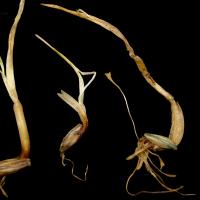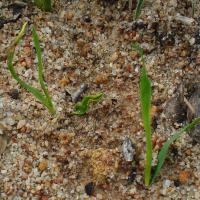Symptoms vary slightly according to group:
Group D — symptoms appear as the crop emerges. In most cases targeted weeds do not appear or are severely root pruned and do not survive.
Groups J — symptoms appear underground or as the weeds and crop emerge and are less severe than Group D.
| Mode of Action Group | Chemical name | Example trade name |
|---|---|---|
| Group D | ||
| Dinitro-anilines | trifluralin | Treflan® |
| pendimethalin | Stomp® | |
| Benzamides | propyzamide | Kerb® |
| Group J Thiocarbamates | ||
| Thiocarbamates | triallate | Avadex® |
| prosulfocarb | Boxer Gold® | |








